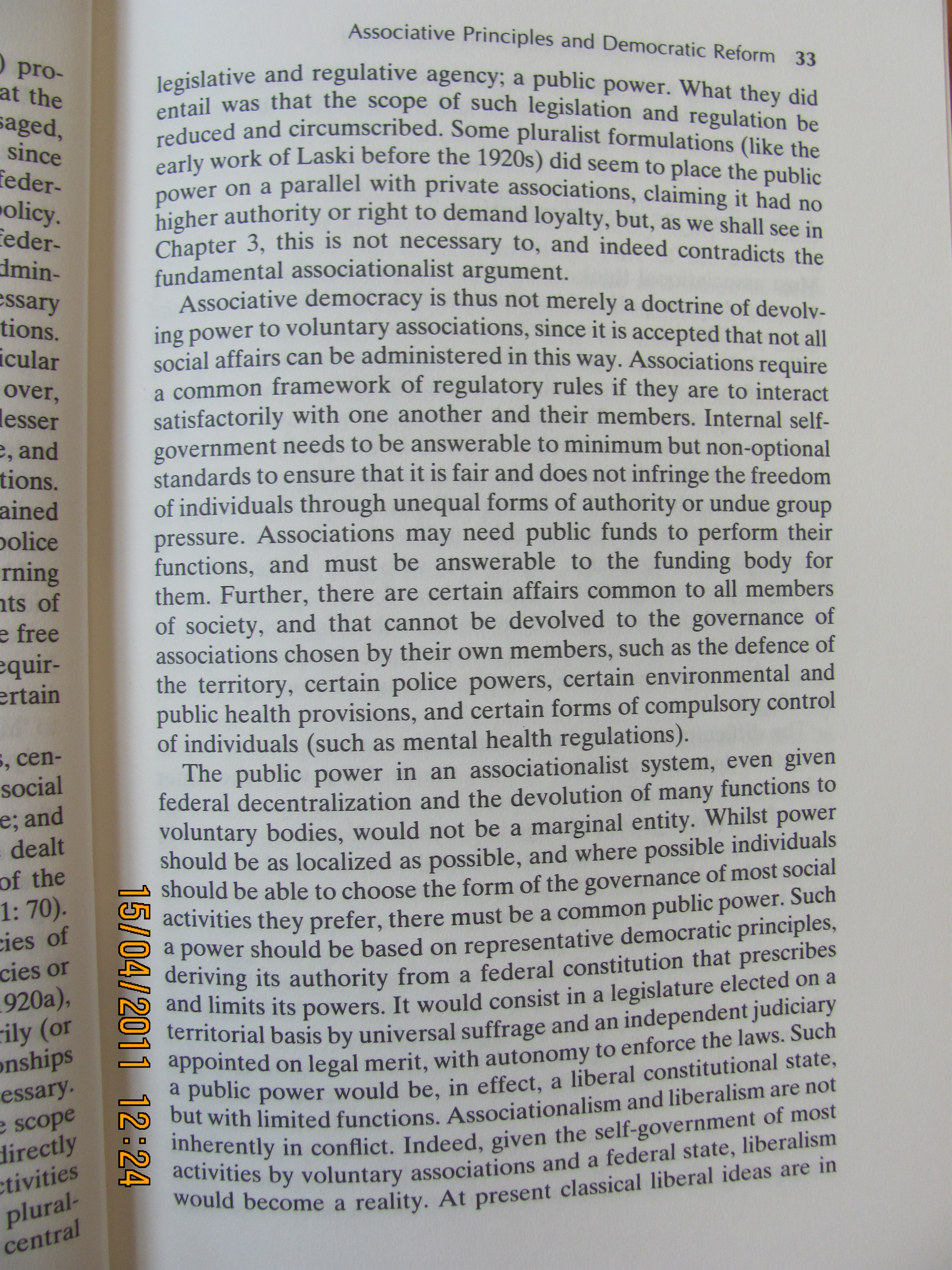IMG#21

Associative Principles and Democratic Reform 33
legislative and regulative agency; a public power. What they did entail was that the scope of such legislation and regulation be reduced and circumscribed. Some pluralist formulations (like the i early work of Laski before the 1920s) did seem to place the public power on a parallel with private associations, claiming it had no higher authority or right to demand loyalty, but, as we shall see in Chapter 3, this is not necessary to, and indeed contradicts the fundamental associationalist argument.
Associative democracy is thus not merely a doctrine of devolv-ing power to voluntary associations, sińce it is accepted that not all social affairs can be administered in this way. Associations reąuire a common framework of regulatory rules if they are to interact satisfactorily with one another and their members. Internal self-govemment needs to be answerable to minimum but non-optional standards to ensure that it is fair and does not infringe the freedom of individuals through uneąual forms of authority or undue group pressure. Associations may need public funds to perform their functions, and must be answerable to the funding body for them. Further, there are certain affairs common to all members i of society, and that cannot be devolved to the govemance of . associations chosen by their own members, such as the defence of the territory, certain police powers, certain environmental and public health provisions, and certain forms of compulsory control of individuals (such as mental health regulations).
The public power in an associationalist system, even given federal decentralization and the devolution of many functions to i voluntary bodies, would not be a marginal entity. Whilst power should be as localized as possible, and where possible individuals L=£j should be able to choose the form of the govemance of most social Ł|nJ activities they prefer, there must be a common public power. Such |E3) a power should be based on representative democratic principles, Eg deriving its authority from a federal constitution that prescribes fcg) and limits its powers. It would consist in a legislature elected on a territorial basis by universal suffrage and an independent judiciary |5 appointed on legał merit, with autonomy to enforce the laws. Such ■ a public power would be, in effect, a liberał constitutional State, but with limited functions. Associationalism and liberalism are not q o inherently in conflict. Indeed, given the self-government of most Kj activities by voluntary associations and a federal State, liberalism wm would become a reality. At present classical liberał ideas are in
Wyszukiwarka
Podobne podstrony:
IMG#09 Associative Principles and Democratic Reform 21 We now tum to examine how associationalist an
IMG#03 Associative Principles and Democratic ReformNew times for an old idea Associationalism is not
IMG#31 Associative Principles and Democratic Reform 43 actualities. Whether associationalism can act
IMG#11 Associative Principles and Democratic Reform 23 corporations, and if the great bulk of other
45747 IMG#25 Associative Principles and Oemocratic Reform 37 CK I gun to question whether existing s
IMG#10 22 Associative Principles and Democratic Reform public power and of the devolved associationa
IMG#18 30 Associative Principles and Democratic Reform gain the upper hand and impose their view on
IMG#14 26 Associative Principles and Democratic Reform democratic naturę of the ‘primary association
więcej podobnych podstron